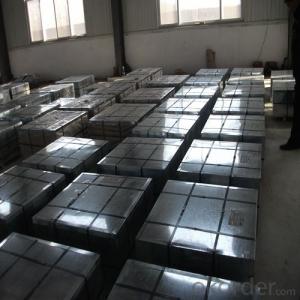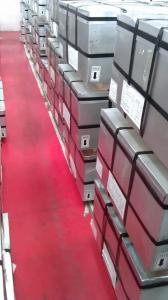Quality Electrolytic Tinplate Coils or Sheet For Tin Cans
- Loading Port:
- Tianjin
- Payment Terms:
- TT OR LC
- Min Order Qty:
- 25 m.t.
- Supply Capability:
- 12000 m.t./month
OKorder Service Pledge
OKorder Financial Service
You Might Also Like
Specification
1.Structure of Quality Electrolytic Tinplate Coils or Sheet For Tin Cans Description
The steel base of electrolytic tinplate provides the necessary strength and formability for can fabrication. The tin-iron alloy layer provides the bond between the steel and free tin layer. The free tin layer is not only responsible for the attractive bright finish and ease of solderability but is also non-toxic- a factor of vital importance in food packaging!
2.Main Features of the Quality Electrolytic Tinplate Coils or Sheet For Tin Cans
Appearance – Tinplate is characterized by its beautiful metallic luster. Products with various kinds of surface roughness are produced by selecting the surface finish of the substrate steel sheet.
Formability and strength – Tinplates have got very good formability and strength. By selecting a proper temper grade, appropriate formability is obtained for different applications as well as the required strength after forming.
Corrosion resistance – Tinplate has got good corrosion resistance. By selecting a proper coating weight, appropriate corrosion resistance is obtained against container contents. Coated items should meet 24 hour 5 % salt spray requirement.
Safe – Tinplate being low weight and high strength makes food cans easy to ship and transport.
Eco friendly – Tinplate offers 100 % recyclability.
Tin is not good for low temperature applications since it changes structure and loses adhesion when exposed to temperatures below – 40 deg C.
3.Quality Electrolytic Tinplate Coils or Sheet For Tin Cans Images


4.Quality Electrolytic Tinplate Coils or Sheet For Tin Cans Specification
Specification of :
Standard: ISO 11949 -1995, GB/T2520-2000,JIS G3303,ASTM A623, BS EN 10202
Material: MR,SPCC
Thickness:0.15mm - 0.50mm
Width: 600mm -1150mm
Temper: T1-T5
Annealing: BA & CA
Coil Inner Diameter: 508mm
Weight: 6-10 tons/coil 1~1.7 tons/sheets bundle
Passivation:311
Oil: DOS
Surface: Finish,bright,stone,matte,silver
5.FAQ of Quality Electrolytic Tinplate Coils or Sheet For Tin Cans
- What is tinning and how does it work?
Tinning is the process of thinly coating sheets of wrought iron or steel with tin, and the resulting product is known as tinplate. It is most often used to prevent rust.
- Do you only have prime quality tinplate?
We can supply both prime and second quality tinplate.
- Q: How does tinplate perform in terms of resistance to humidity?
- Tinplate performs exceptionally well in terms of resistance to humidity. The tin coating acts as a protective barrier, preventing moisture from reaching the underlying steel and minimizing the risk of corrosion. This makes tinplate a reliable choice for packaging materials, especially for products that are sensitive to moisture.
- Q: How is tinplate used in the construction industry?
- Tinplate is commonly used in the construction industry for various applications. It is primarily utilized for roofing and cladding purposes due to its durability, corrosion resistance, and aesthetic appeal. Tinplate sheets are often employed in the construction of warehouses, industrial buildings, and residential structures as a protective outer layer. Additionally, tinplate can be used for decorative purposes, such as wall panels or ceiling tiles, adding a sleek and modern look to buildings.
- Q: How is tinplate protected during transportation and storage?
- Tinplate is typically protected during transportation and storage through various measures such as the application of protective coatings, proper packaging, and ensuring suitable storage conditions. These protective coatings, like lacquers or organic coatings, are applied to the tinplate's surface to prevent corrosion and provide a barrier against moisture, chemicals, and external damage during transit. Additionally, tinplate is often stored in dry and well-ventilated areas to avoid exposure to humidity and other environmental factors that can compromise its quality. Proper packaging, such as using pallets, crates, or wrapping materials, is also employed to prevent physical damage and ensure secure transportation.
- Q: Can tinplate be used for paint cans?
- Yes, tinplate can be used for paint cans. Tinplate is a commonly used material for manufacturing paint cans due to its durability, corrosion resistance, and ability to preserve the quality of the paint inside. It also provides a smooth surface for labeling and branding purposes.
- Q: What are the common corrosion protection methods used for tinplate?
- The common corrosion protection methods used for tinplate include electroplating, organic coatings, and lacquering. Electroplating involves depositing a layer of tin onto the surface of the tinplate to provide a barrier against corrosion. Organic coatings, such as epoxy or polyester, can also be applied to protect the tinplate from moisture and other corrosive elements. Lacquering is another method where a layer of lacquer is applied to the tinplate to create a protective barrier.
- Q: How does tinplate perform in terms of oxygen barrier properties?
- Tinplate performs excellently in terms of oxygen barrier properties. The tin coating on the steel substrate acts as an effective barrier, preventing oxygen from permeating through the material. This property makes tinplate ideal for packaging applications, as it helps to preserve the freshness and quality of oxygen-sensitive products.
- Q: What are the main applications of tinplate in the medical industry?
- Tinplate is primarily used in the medical industry for packaging pharmaceutical products, such as pills and tablets, due to its excellent barrier properties against moisture, light, and oxygen. It is also commonly used for medical device packaging, ensuring the sterility and protection of sensitive equipment. Additionally, tinplate is utilized in the production of medical instruments and tools, as it provides a durable and corrosion-resistant coating.
- Q: Can tinplate be used for microwave-safe packaging?
- No, tinplate cannot be used for microwave-safe packaging as it is not suitable for microwave heating.
- Q: How does the thickness of tinplate affect its strength and durability?
- The thickness of tinplate directly influences its strength and durability. Generally, thicker tinplate tends to be stronger and more durable compared to thinner tinplate. A thicker tinplate has a higher resistance to bending, denting, or puncturing, making it less prone to damage during handling, storage, or transportation. Additionally, the increased thickness provides better protection against corrosion and extends the tinplate's lifespan. However, thicker tinplate also tends to be heavier and more expensive. Therefore, finding the right balance between thickness and cost is crucial when considering the strength and durability requirements for a specific application.
- Q: What are the main applications of tinplate in the pet care industry?
- Tinplate is commonly used in the pet care industry for packaging various products such as pet food, treats, and supplements. The main applications of tinplate in this industry include preserving the quality and freshness of pet food, ensuring product safety, and enhancing the overall visual appeal of the packaging.
Send your message to us
Quality Electrolytic Tinplate Coils or Sheet For Tin Cans
- Loading Port:
- Tianjin
- Payment Terms:
- TT OR LC
- Min Order Qty:
- 25 m.t.
- Supply Capability:
- 12000 m.t./month
OKorder Service Pledge
OKorder Financial Service
Similar products
Hot products
Hot Searches
Related keywords




























